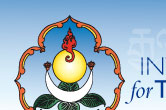  |
 |
|
A Brief History of Mantra Healing and Medicine in Tibet In addition to advancing the cause of Tibetan medicine, King Trisong Deutsun is remembered for having invited the great Indian saint - Guru Padmasambhava - to Tibet. Guru Padmasambhava founded the Vajrayana Buddhist philosophy in Tibet. Vajrayana is also known as Mantrayana. Mantrayana comprises of the highest esoteric tantric studies, as well as the most specialised and profound mantra studies, within Tibetan Buddhism. In Tibet, the lineages of Tibetan Buddhist practitioners are divided into two groups: those belonging to the monastic tradition - distinguished by their red robes and shaved heads, and lay-practitioners - who traditionally have been distinctive for their white robes and long hair. These white-robed long-haired yogic lay-practitioners are known as Ngakpas. Vajrayana is practised, in particular, by the Ngakpas. Yuthok Yongten Gonpo the Elder (708-833 CE) is known as ‘The Father of Tibetan Medicine’. He was born into a family of doctors and started practising medicine at an early age, having received teachings and transmissions in medicine from his father. At the age of 10 years he won a debate against many great doctors and consequently became the most eminent physician in Tibet. In the company of his father, Yuthok travelled extensively throughout Tibet, China and India. During this time he studied Ayurveda and Buddhism; he also collected many texts which he brought back to Tibet. The results of his study and research culminated in the writing of his famous text, the “rGyud bZhi” (‘The Four Tantras’), which is considered to be the most important Tibetan medical text ever written, and which forms the basis of Tibetan medical knowledge and practice even to the present day. Yuthok Yongten Gonpo the Younger (1126-1202 CE) was the 13th in the Lineage of Yuthok and is believed to have been a reincarnation of his namesake, Yuthok Gonten Gonpo the Elder. He began studying medicine at the age of 8 and at age 10 he received the whole teachings of the "rGyud Zhi" (’The Four Tantras’). Yuthok visited India many times for purposes of research and study, and then returned to Tibet and re-wrote ‘The Four Tantras‘. This revised version of ’The Four Tantras’ remains unchanged to the present day. In collaboration with his students, Yuthok wrote a number of diverse practical texts , which were collated into a set of teachings called “Cha-lag bCo-brGyad” (‘The Eighteen Branches of Tibetan Medicine’). In addition to the demands of clinical practice, Yuthok stressed the importance of spiritual practice. His seminal text, the “Yuthok Nyingthig” encapsulates the teachings on which his lineage is based, namely the union of clinical medicine and spiritual practice. In this text, he gives details on yoga, mantra and meditation practices, as well as how to integrate these into medical practice. Yuthok maintained that in order to be a proficient physician, the aspiring doctor must first practice upon himself - knowing his body and mind intimately, prior to practising on other people. Yuthok himself was a highly accomplished spiritual practitioner, who attained the Rainbow Body when leaving this worldly existence.
|
|||||||||||||||||||||||||
© IATTM 2007 |
back to top | ||||||||||||||||||||||||